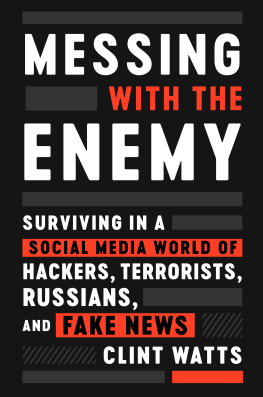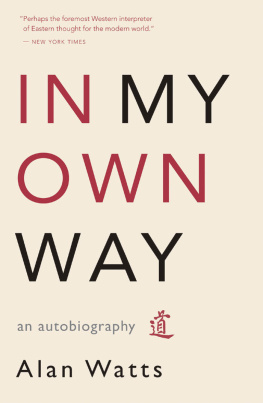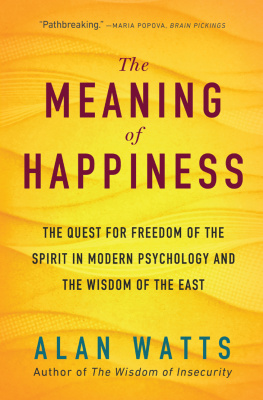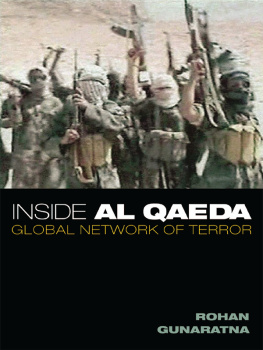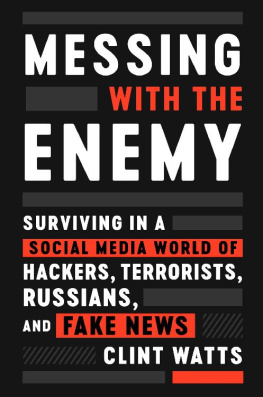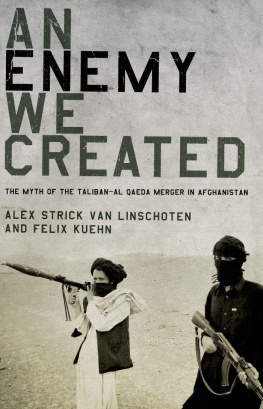Thats him, or at least one of his friends.
I stared at my phone on a wintry Boston night in January 2013, scrolling through my Twitter account. For the past several years, Id watched terrorists chat with each other and pundits banter and commiserate on my feed, expressing their views on the current state of global jihad. Rarely did the two communities converse, instead expressing themselves in parallel worlds.
Aslam Awan lived in the UK for 4 years, the tweet read, tagging my handle, @selectedwisdom, and linking to a Telegraph news article. The name Aslam Awan meant nothing to me. But someone in Somalia had sought me out on Twitter to bring this story to my attention. I had a sneaking suspicion that it was Alabama-born-and-bred American terrorist Omar Hammami, someone Id been monitoring for years, or one of his close associates.
Like many other counterterrorism experts, I opined on the travails of al-Qaeda and its followers on a blog. Mine was called Selected Wisdom.com and had an accompanying Twitter account. By 2013, Id just finished my second stint at the FBI, counterterrorism had become a hobby rather than my job, and the blog was a distraction from the daily grind in Boston.
Writing on my own meant that I could focus on what I deemed important, pressing issues, rather than the pet projects of poorly informed bureaucrats checking their time in the Pentagon or narrow FBI investigations completely devoid of the bigger picture. On the internet, too, I had an audience. Far more people read what I wrote in late-night blog posts than had ever consumed the analysis I did for the government. Serving as a contractor for countless Defense Department and intelligence community projects, I had written up massive research studies that littered the shared drives of the U.S. counterterrorism community. If they were read, they were routinely dismissed or forgotten amid an endless sea of similar reports pontificating on the strengths and weaknesses of Osama bin Laden and his legions. I dont really blame the U.S. intelligence agencies or the special operations folks scattered around the world for ignoring the countless tomes of analysis theyd purchased. They received far more content than they could ever possibly read, comprehend, and utilize.
Freed from the bureaucratic constraints of Washington, left to my own devices, and with the internet as my playground, I could broaden and deepen my study of terrorists. I had access to many more sources, could choose what I studied, and, most important, could actually engage with the enemy. For lack of a better word, I could mess with extremists half a world awayobserve their debates, gauge their commitment to terrorist principles, and poke them with queriesall from a laptop at home.
The World Wide Web is and will remain the fastest and best way to be in touch with Americas enemies. All of them go to cyberspace to connect with one another and attack us. The internet provided a virtual safe haven for al-Qaeda, its affiliates, and its splinter groups. As terrorists flocked to social media, analysts and researchers outside of intelligence agencies no longer needed classified reporting to know what terrorists were up to. All we had to do was log on and watch. Online, jihadis posted their violent acts for all to see. These young men might have wanted to hide their real identities, but they worked hard to achieve notoriety as online personas. Interacting with counterterrorism experts like me on the internet lent them legitimacy and made them look fearless, elevating their international brand. I had some special knowledge of the Horn of Africa and its terrorist groups, so I spent a good deal of time observing and narrating the trajectory of the Twitter-savvy and notoriously violent Somali terrorist group known as al-Shabaab. One of my most devoted readers on the subject resided in Somalia and happened to be one of Americas most wanted terrorists.
As terrorist recruits go, the whiter the terrorist, the weirder the storyand Omar Hammami definitely fit that mold. Born the son of a Syrian American father and an American woman, Omar grew up in one of the least likely places to produce a terrorist recruit fighting in the Horn of Africa: Daphne, Alabama. Omar was an exceptionally bright but contrarian kid, and his path to violent jihad twisted and turned through stops in Toronto and Cairo before reaching Mogadishu in 2006. By his account, he was immediately met and assessed by one of al-Qaedas most notorious operatives, Fazul Abdullah Mohammed. Fazul, as he was commonly referred to in counterterrorism circles, once served as personal secretary to Osama bin Laden and orchestrated al-Qaedas operations throughout the Horn of Africa, including the 1998 bombings of U.S. embassies in Nairobi, Kenya, and Dar es Salaam, Tanzania.
Having passed an initial screening, Omar joined a sizable cadre of fellow foreign fighters from around the world seeking to establish an Islamic state in a country torn apart by decades of war. While Hammamis fighting against the Ethiopian army wasnt particularly remarkable, what he did on social media proved to be groundbreaking. Omar used YouTube to launch a new music genre: jihadi rap.
War by war, only gonna make our black flag soar.
Drip by drip, shot by shot, only gonna give us the death we sought.
Omars charisma and American roots allowed him to do something few other members of al-Shabaabor, at the time, even al-Qaedacould do: connect with vulnerable young Western recruits who were on the fence about making a treacherous trip to join a terrorist group. Omar told the jihadi foreign fighter story like few others, connecting with two important audiences: potential terrorists and the counterterrorists who chased them. A few American jihadi fanboys surely admired Hammami, but in many ways his principal audience was nervous national security strategists. I suffered through more Pentagon PowerPoint counterterrorism briefs showcasing Omars rhymes than I witnessed foreign fighters joining al-Shabaab. But the broader message of these videos and its implications were clear. Jihads me generation was migrating to social media in a big wayYouTube, Facebook, and Twitter were the future of violent factions far and wide.
Al-Qaeda and, by extension, al-Shabaab coveted Western recruits both for their propaganda value and their operational utility. Americans like Omar, the Californian Adam Gadahn (known in al-Qaeda ranks as Azzam the American), and later the Yemeni American Anwar al-Awlaki struck a chord with potential American recruits in ways Arabic-speaking clerics couldnt. Operationally, American recruits without criminal records can easily infiltrate back home, avoid setting off counterterrorism trip wires, and execute spectacular attacks in the United States. Known in the terrorism business as clean skins for their innate ability to slip past Western security, Americans were critical for an al-Qaeda being challenged and chased on all fronts. Guys like Omar helped bring fresh clean skins into the jihadi ranks and inspired those at home who were unable to get to places like Somalia, Yemen, Iraq, or Pakistan but were willing and able to perpetuate violence locally. As Omars star rose, key al-Shabaab leaders promoted him into speaking roles at Shabaab rallies and in social media videos. Each public appearance suggested to potential recruits that not only could a Westerner come and join the group, but they ultimately could lead the jihad as well, be the next bin Laden, perhaps. Omars name was getting bigger, and so was his ego.

